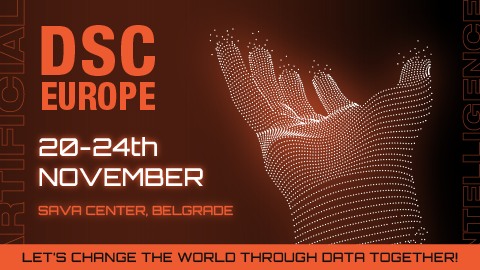DSC Conference Day 2
Automatic Detection & Geolocation of Persons on UAV Images
This presentation was given by Marina Ivasic-Kos from the University of Rijeci.
The main problem they are addressing is the difficulty of finding people from high altitudes in challenging terrains. The aim is to locate people in the shortest amount of time, with the least amount of material, and in the safest way possible.
The proposed solution is to use drones equipped with thermal cameras, powerful zoom, and other features. These types of drones are already used in flood detection systems, lifeguard systems, and more. However, these systems typically use specialized, expensive drones. This team aims to enable small personal use drones, like those from DJI, to assist in these tasks.
Deep neural networks are used to detect persons. The team trained these networks using images from their campus, CARPK, UAV123, Ocutama-Action, and/or VisDrone. A problem with these images is that they typically depict people in “normal” positions, such as uninjured and not laying on the ground.
To address this, they created the SARD dataset, which contains 6500 individually marked persons and annotated data (identifying persons, cars, etc.). The SARD dataset contains 1981 images and 6500 objects.
Using this personalized dataset significantly improved their performance, increasing it from 25%/40% to 75%/90%, compared to using the un-personalized dataset.
One challenge they faced was the 3D problem: the drone operates on a 2D map and is not directly above the person, usually being far away.
To overcome this, they used GPS and raycasting from the drone to the person, which allowed them to geolocate the person with a 10m error. They also found that using multiple images for better precision was beneficial, especially when the drone overflies the zone multiple times.
In the future, they plan to use infrared cameras to improve performance in night and adverse weather conditions.
Gamification within Oil and Gas Industry
This section was presented by Nikola Stojanovic from the University of Nis. He discussed how data is represented in a Minecraft-like world with blocks, and people can explore this universe via MetaQuest 2. We witnessed a demonstration of this game-like system where you have to dig through data, pick the right layer, and if you make the right choices, you will find oil.
Why is Data Analysis More Important in VR Games than Traditional Games
Adrian Dura, Co-founder of Eipix, Studio Production Manager at Ubisoft, and CEO of Flat Hill Games, discussed why data analytics is more crucial in premium games, not free-to-play (F2P) games. The iteration loop of “Build, Measure, and Learn” is a key part of this process. Interestingly, 90% of revenue now comes from Meta Quest, which is now considered as a console, alongside PS and Xbox. A significant challenge in VR games is the multitude of input variations, as your body acts as the controller, compared to a mouse in traditional games.
Data Example
There were several examples of how data analysis can improve VR games. For instance, some negative user reviews mentioned glitches where 15% of users unintentionally drop objects. The solution was user height segmentation. By observing that a specific height has a high drop rate, the game can be adapted for that specific height. For example, the height of a table with a handlebar can be adjusted because shorter people were hitting the table unintentionally.
Another case involved trying to pick up an object, which almost never happens on the first try. This issue only occurred to one person in the team, whose timing was a millisecond later.
Another case involved how to exit the game, either by taking off the headset or through the in-game menu. This data is helpful in analyzing churn, as people who take off the headset might not be leaving the game but merely pausing, while those who exit through the menu are likely closing the game to open another one.
Hand tracking presents another challenge, as it involves very complex data with 26 joints in all fingers. The industry is currently struggling with this because the experience is not yet optimal. Perhaps the upcoming Apple Headset, which prioritizes hand experience, will solve this issue. The question remains: what is considered a grab? Not all people grab objects the same way, and new users might be scared to grab.
There are several important elements to address in VR games:
- Immersion: The intention of the player must reflect the in-game outcome. Every object added must be interactable to maintain immersion, so it’s important to think before adding objects.
- Comfort and safety: Consider how a body works and think about people with disabilities. Also, consider the pace of the game to ensure it’s not too tiring unless it’s a fitness-type game.
- Gameplay mechanics: The mechanics should work well and be easy to understand.
Can Generative AI be infused in Gaming ?
by Marko Jevremovic, Nikola Dankanov
Gen AI can be used to make the game more aware of the player, and make the player “create” the game alongside the game, not only as an observer of NPCs but as an actual creator of interactions.
